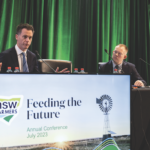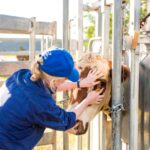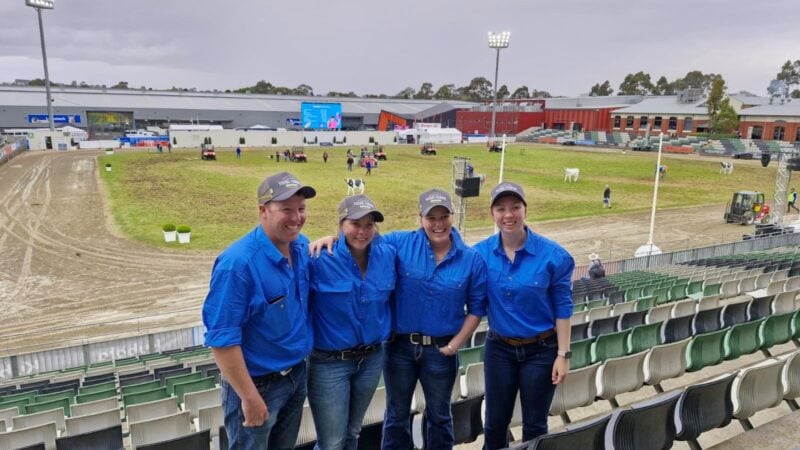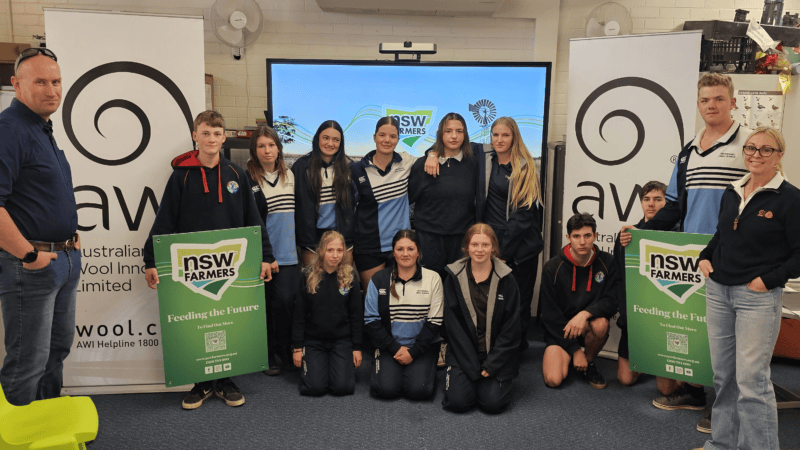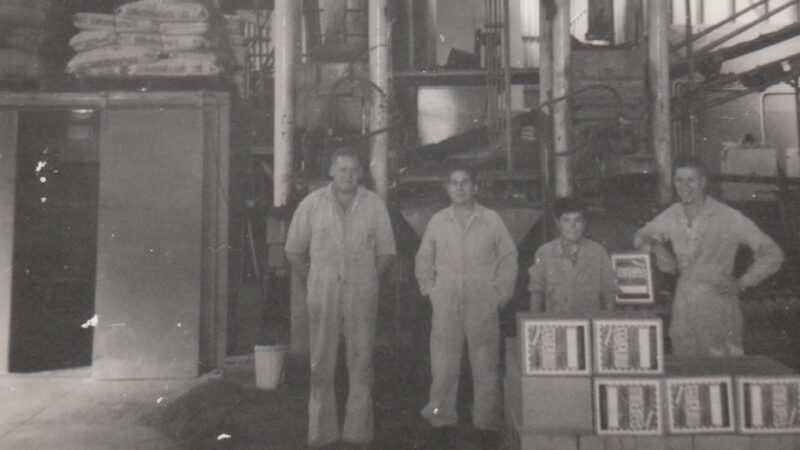The atmosphere at Rosehill Gardens Racecourse in mid-July was resolute, lively and highly social as…
Local firefighters protect Tenterfield
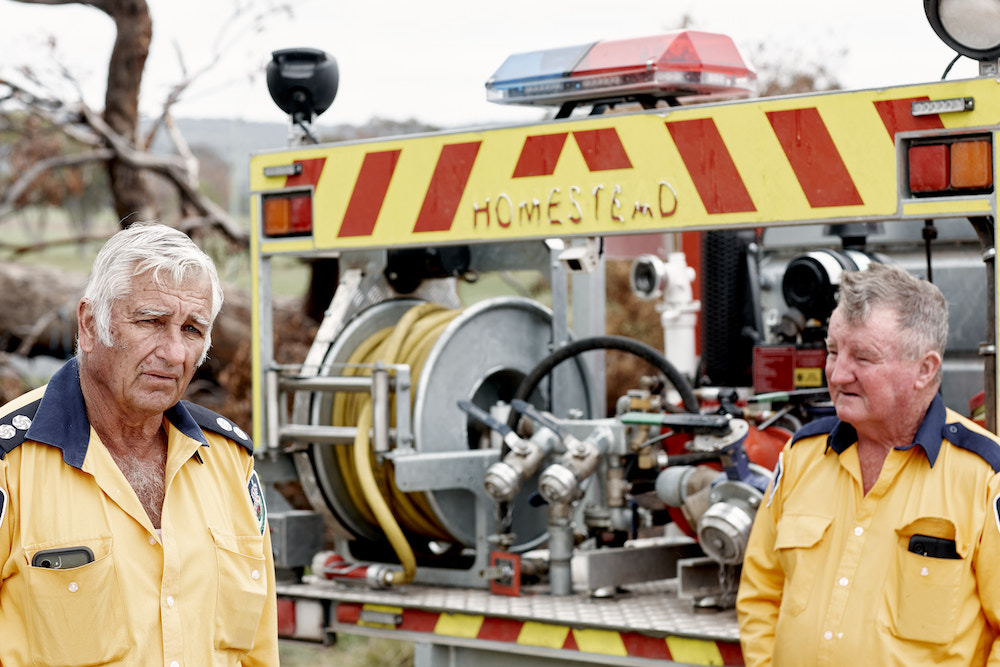
Robert Hines is the sort of bloke you want around when bushfires are threatening the Tenterfield region. So is his fellow Homestead Rural Fire Service (RFS) volunteer Gary Smith.
They have 70 years of firefighting experience between them, and have battled hundreds of fires together since Robert joined as a volunteer in 1984 and Gary in 1993.
They are born and bred in the far northern region and know the lay of the land on just about every inch of the Tenterfield Shire.
When a series of fires menaced Tenterfield and surrounds on 31 October, Robert and Gary fired up the Homestead RFS brigade truck and headed out to confront what Robert described as the worst conditions he had seen.

�I did not think we would see anything as bad again as 2019 and 2020, but this was three times as bad in some places.�
Robert Hines, RFS volunteer
�The flames got up to 40 feet high when the wind got behind them and it was coming into places like Wallangarra, Jennings and Tenterfield and down to Sandy Gully.
�It was just horrendous. The fuel load was big after a couple of good years and the African lovegrass just explodes when it gets going. You couldn�t get in front of the fires. The choppers and the planes were doing the best they could do.�
Robert credits the aerial drops of fire retardant and the �massive amount of feet on the ground�, which included those of farmers and RFS members from other local brigades, for saving property and lives from a catastrophic situation.
Gary, who is a local farmer from Leeches Gully, agrees. The former diesel mechanic has also contributed to local fire management as a fleet manager for the Tenterfield Shire Council.
�It was a very intense few days,� Gary says. �Everyone jumps in to get the job done. That�s what happens in a lot of small country towns.�
Gary also praised the efforts of local farmers and their fleet of farm fire units.
�We wouldn�t have saved some of the houses if there weren�t farmers there with their fire units on the back of utes.
�They were marvellous, as there just wasn�t enough units to go around when everything went pear shaped.�
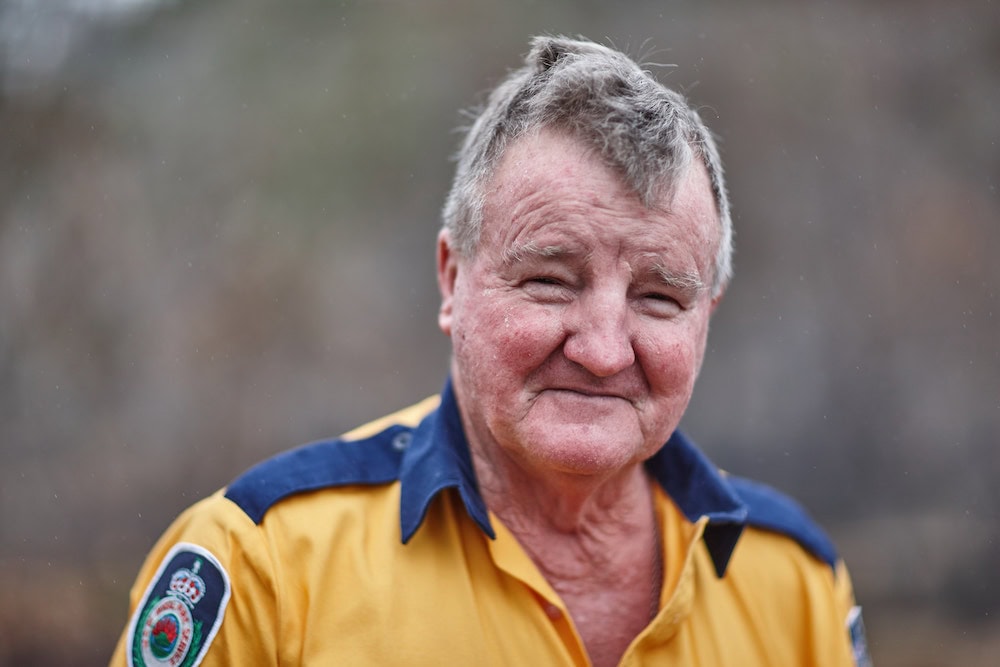
Robert, a local fencing and weed control contractor, said he was cajoled into joining the Boonoo Boonoo brigade at the age of 30. That brigade folded a few years later and he has been a member of the Homestead RFS brigade ever since, including the last 13 years as captain. The grandfather of five has lived in the Queensland border village of Wallangarra with his wife Helen for 50 years.
While he does lament some of the bureaucracy now facing RFS volunteers, Robert is proud of the organisation and has accepted an offer to become RFS Deputy Group Officer. He was also presented with a RFS Life Membership award in November.
�You do feel proud that you are doing something for your community and your country, and there is a lot of camaraderie between the brigades,� Robert said.
Grass roots care
Tenterfield Mayor Bronwyn Petrie said farm fire units played an enormous role in preventing fires from raging across the entire shire.
�They were the first responders in many cases. We had seven farm fire units on our farm when it first started and the RFS were able to move onto the next fires,� Bronwyn said.
�Most of our RFS members are farmers, but there are also a lot out there with their own slip-on units or spray units. Lots of people said to me that farmers had saved their houses.�
Bronwyn Petrie, Tenterfield Mayor
Bronwyn, who is a member of the NSW Farmers� Association, applauds RFS moves to test the capabilities and practical applications of farm fire units and to improve communication channels with farmers.
�RFS had a stand at the 2023 NSW Farmers annual conference, and they demonstrated a fit-for-purpose unit that farmers could slip on to their utes,� she says.
�They have also retrofitted UHF radios into their vehicles, which was a smart move.�
Joining forces and raising the bar
RFS and NSW Farmers jointly launched a Farm Fire Unit project in 2022 focussed on providing guidelines to incorporate privately owned Farm Fire Units into bushfire responses.
That has since evolved into other projects on testing the suitability of various units for farm vehicles and the formation of a focus group involving NSW Farmers that will examine statewide and local Farm Fire Unit initiatives.
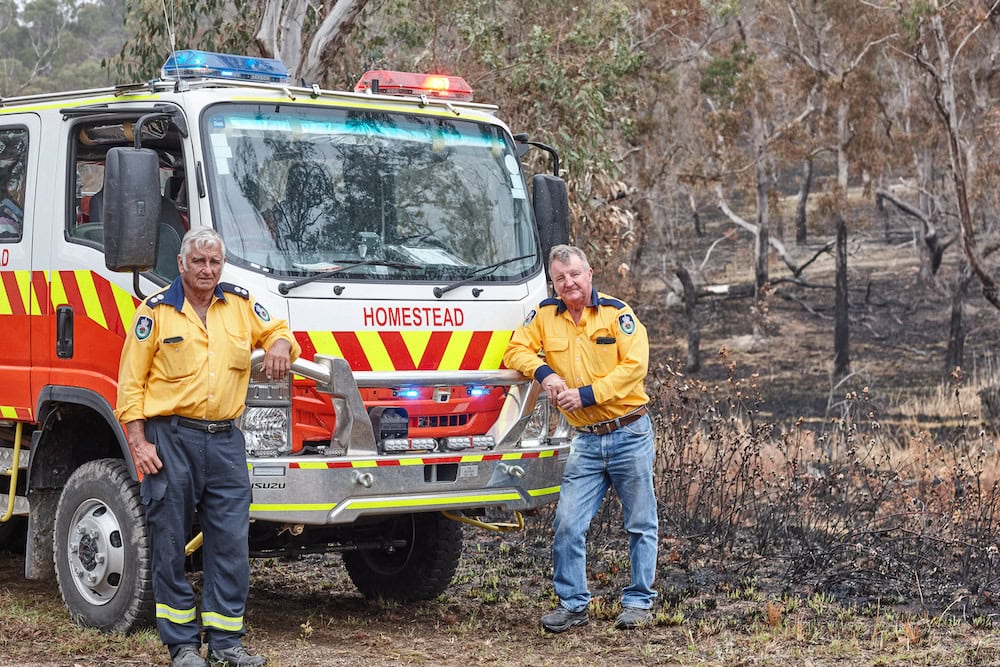
Bronwyn said communication and coordination efforts were �a vast improvement� compared to the 2019-2020 fires.
�The RFS listened to local knowledge, and they threw everything at fires early, which is not what happened four years ago. The local brigades and their volunteers were simply great,� she says.
NSW RFS Area Commander Heath Stimson said the relationship between the RFS, NSW Farmers and the farming community had been �ever improving� since the 2017 Sir Ivan bushfire.
�What we are noticing is increased communication between RFS and farmers before and during a fire, to better understand what one another�s needs are,� he says, noting that farm fire units have been a key ally in creating more cohesion across the fire battlegrounds in 2023.
�There is more appreciation that farm fire units have been part of the landscape for a long time and of the great work they do in communicating from the fireground and ensuring everyone is keeping safe.�
Heath Stimson, NSW RFS Area Commander
�We have some good examples of cohesion across the fire ground this year because of that. There is still a lot of work to do, but it is improving. The knowledge that our farmers have of their land is critical in the way we successfully undertake firefighting.
�The RFS and the former Bush Fire Brigade was started by farmers around Berrigan over 100 years ago and a larger percentage of volunteers in regional and rural areas are farmers, so there is a strong connection between the two.�
Prepping lessons learned from 2019
Rolls of soaker hoses from Bunnings played an important role in David and Caroline Duff�s fire management plan in the days leading up to the Willi Willi Road bushfire west of Kempsey.
The hoses were joined and zip-tied to 63-millimetre pipes that ran down to a pump on the river and were soaked for three days before the fire reached the Duff�s property.
�Those pipes burnt in 2019 and the soaker hoses reduced the risk of losing them again,� David said. �We also had a wobbler sprinkler going on top of the pump shed for three days.�
This minor investment proved its worth during the fire event that started on October 14 and burned through more than 23,000 hectares of land including much of the Duff�s 1010ha farm at Toorooka.
It was part of a plan that started in August and one that was inspired by the devastating impact of the black summer fires in 2019.
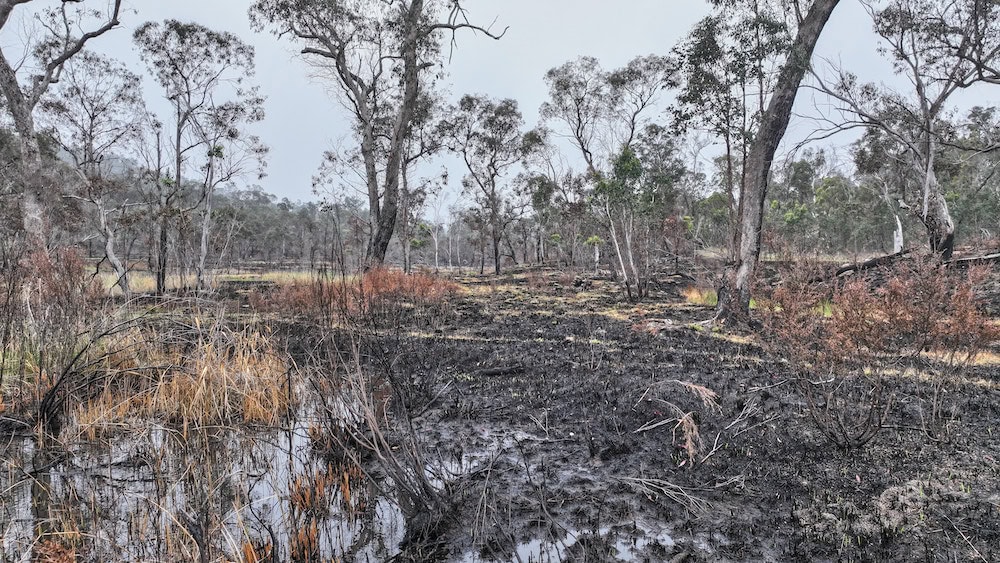
The Duffs used a dozer to put some firebreak trails in along boundary fences, did some controlled backburning and ensured their homestead�s lawns and gardens were a green oasis.
�We installed a 13kva generator that can run the hose and the pumps down at the river. It kicked in as soon as the power went out. You�ve got a real advantage when you have power and water,� David says.
�We also got a couple of fire firing units, including one that is mobile and can be plugged straight into a 5000-gallon concrete tank. We also did simple things like servicing all the pumps because we knew it was coming.�
As the fires drew closer, Caroline took charge of protecting the house with sprinklers on the roof, filling gutters and bathtubs with water and extra soaking for the lawns.
�A couple of RFS trucks turned up here and were able to move onto other locations as we were well prepared,� David adds.
�We have put a lot a thought into how best to fireproof ourselves after what happened in 2019, and we were much better prepared this time round. We are also fortunate to be on the Macleay River with the infrastructure to access water in the driest of times.�
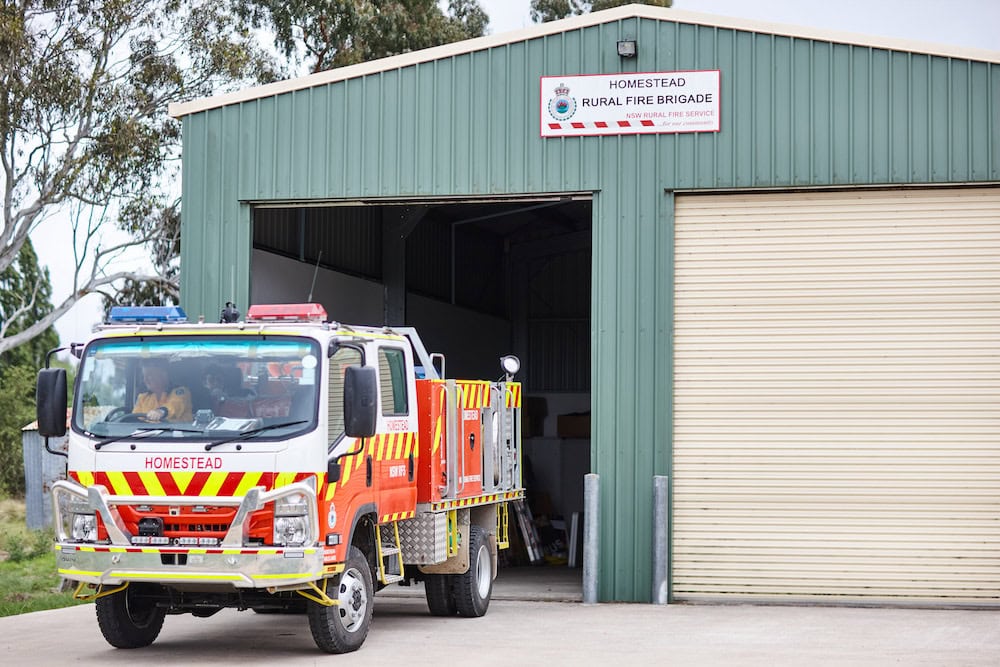
David, who is chair of the NSW Farmers Macleay Valley branch, said he has learned that there is no room for complacency when it comes to preparing for bushfires.
His family�s farm was engulfed in a firestorm on November 8, 2019, that almost destroyed their beef and cropping enterprise and caused the death of one their neighbours. Tragically, another neighbour lost his life in October during the Willi Wille Road bushfire.
�To have two fires in under four years and lose two lives within a couple of kilometres of each other demonstrates just how dangerous these events are,� he says. �While it was not as big as the 2019 fires, the intensity of it was just as significant and no two fires are the same.�
David Duff, Chair of NSW Farmers Macleay Valley branch
David noted that the declared drought conditions in the Kempsey Shire had provided a �brown� buffer for the homestead and surrounding sheds.
�We would have lost around 95 per cent of grass country this time round,� he explains. �We hadn�t planted any soybeans over winter because it was so dry, so our cultivation country was empty and provided a buffer from the west.�
Need for Feed and North Coast Local Land Services coordinated truckloads of donated fodder for farmers as soon as they could, and Blazeaid stepped in to assist with fencing repairs.
�The donated fodder was great. Unlike the fires in 2019, the roads were not blocked and it could get out to farmers,� David says. �The RFS also did a really good job. You have to congratulate them for saving properties in what was a very serious bushfire.�
If you enjoyed this piece, make sure to read our story on how a Farm Fire Unit Guide will help farmers and firefighters better protect communities.


